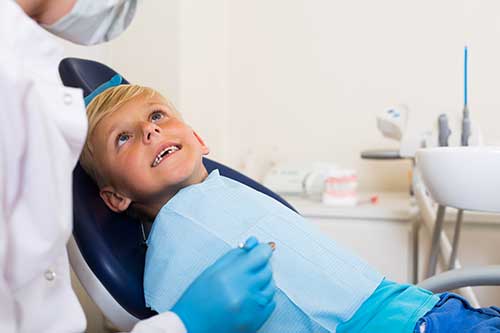The smart Trick of Legacy Orthodontics That Nobody is Discussing
The smart Trick of Legacy Orthodontics That Nobody is Discussing
Blog Article
The Definitive Guide for Legacy Orthodontics
Table of ContentsThe Ultimate Guide To Legacy OrthodonticsThe Legacy Orthodontics DiariesSome Ideas on Legacy Orthodontics You Should KnowThe Best Guide To Legacy Orthodontics5 Simple Techniques For Legacy Orthodontics
At Advanced Orthodontics, we provide individuals with a all natural therapy experience. On top of that, we provide flexible therapy routines, flexible settlement choices and an enjoyable, delightful experience. leesburg orthodontist. Phone call ( 480) 357-4900 today for more info and schedule a consultation.An orthodontist is a dental practitioner trained to diagnose, avoid, and deal with teeth and jaw irregularities. They deal with existing problems and are educated to determine problems that might create in the future. Orthodontists collaborate with individuals of every ages, from youngsters to grownups. People commonly connect an ideal smile with great health and wellness.
Malocclusion, or misaligned teeth, can bring about dental problems, consisting of dental cavity, gum tissue illness, and hard or excruciating chewing. Not everybody is born with straight teeth. If you have a bad bite or big spaces in between your teeth, you might intend to speak with a dental practitioner focusing on orthodontic care.
The Best Strategy To Use For Legacy Orthodontics
( Photo Credit Scores: DigitalVision/Getty Images) Orthodontists use taken care of and removable oral gadgets, like braces, retainers, and bands, to change the placement of teeth in your mouth. Orthodontic treatment is for oral problems, consisting of: Misaligned teethBite issues, like an overbite or an underbiteCrowded teeth or teeth that are also far apartJaw misalignmentThe goal of orthodontic therapy is to improve your bite.
While you may assume of orthodontists as generally for youngsters or teenagers who need braces, they can fix oral troubles at any kind of age. Orthodontists go to university, oral college, and orthodontic institution.
All orthodontists are dentists, however not all dental practitioners are orthodontists. Orthodontic residency programs provide intensive, concentrated direction for dental professionals. They concentrate on two areas: Exactly how to correctly and securely move teeth How to appropriately direct development in the teeth, jaw, and faceOnce an orthodontist has finished training, they have the option to come to be board accredited.
How Legacy Orthodontics can Save You Time, Stress, and Money.
Imbalance, or malocclusion, is the most usual factor people see an orthodontist. It is genetic and is the outcome of dimension differences in between the top and reduced jaw or between the jaw and teeth. Malocclusion results in tooth overcrowding, an askew jaw, or irregular bite patterns. Malocclusion is generally treated with: Your orthodontist connects steel, ceramic, or plastic square bonds to your teeth.
If you have just small malocclusion, you may have the ability to make use of clear braces, called aligners, rather than standard braces (https://allmyfaves.com/legacyortho?tab=Legacy%20Orthodontics). Some people require a headwear to aid move teeth into line with pressure from outside the mouth. After braces or aligners, you'll need to wear a retainer. A retainer is a customized device that maintains your teeth in position.
They're most commonly used on youngsters. They can develop additional room in the mouth without needing to draw teeth. If you have a major underbite or overbite, you might require orthognathic surgical treatment (likewise called orthodontic surgical treatment) to lengthen or shorten your jaw. Orthodontists utilize cords, surgical screws, or plates to support your jaw bone.
You may need to see an orthodontist if you have: Crowding or otherwise sufficient room for all of your teethOverbite, when your top teeth come your bottom teethUnderbite, when your bottom teeth are also much forwardSpacing or issues with gapsCrossbite, which is when your upper teeth fit behind your bottom teeth when your mouth is closedOpen bite or an upright space in between your front base and upper teethMisplaced midline, when the facility of your base and top teeth braces do not line up Dealing with an oral malocclusion can: Make attacking, eating, and talking easierImprove the balance of our face and your general appearanceEase discomfort from temporomandibular joint disordersDifferent your teeth and make them simpler to clean up, helping prevent tooth decay or cavities It's frequently a dental practitioner who initially notifications misaligned teeth throughout a routine exam.
About Legacy Orthodontics

During your very first orthodontic assessment, you'll likely have: An oral examPhotos taken of your face and smileDental X-raysPanoramic (360 level) X-rays of your face and headImpressions to produce molds of your teethThese tests will help your orthodontist know just how to continue with your therapy. leesburg invisalign. An orthodontist is a dentist who's had training to treat your teeth and jaw
An orthodontist is focused on your bite, so something like a chipped tooth would be taken care of by a dentist. Orthodontists are concentrated on your bite, or the way your teeth fit with each other, and the straightness of your teeth.
Ever asked yourself exactly how celebrities always seem to have flawlessly aligned teeth? The solution usually depends on the experienced hands of an orthodontist. However just what does an orthodontist do? Orthodontists are oral professionals who concentrate on fixing irregularities in the teeth and jaws. Their know-how surpasses just developing a lovely smile; it encompasses enhancing your total oral health and wellness and function.
Legacy Orthodontics Things To Know Before You Buy
/assets/images/provider/photos/2686944.jpg)
While braces are the most commonly acknowledged orthodontic therapy, orthodontists have a varied toolkit at their disposal. The certain strategy picked relies on the intensity of the case, the patient's age, and individual preferences. These reliable dental braces utilize a system of brackets bonded to the teeth and linked by cables.
These removable trays are customized to progressively change the teeth's setting. In cases of slim jaws, palatal expanders can be utilized to create room for appropriate tooth positioning.
Report this page